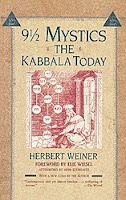 A few weeks ago I had some email exchanges with my friend and colleague Rabbi Steve Shaw, who has known Rabbi Steinsaltz for decades. Steve was instrumental in helping Rabbi Steinsaltz launch his publishing and teachings activities in the United States. Currently Steve is living in Jerusalem and is doing extraordinary work with Bedouins at Ben Gurion University in Beersheva. I will always be indebted to Steve for arranging my very first meeting with Rabbi Steinsaltz nearly 30 years ago.
A few weeks ago I had some email exchanges with my friend and colleague Rabbi Steve Shaw, who has known Rabbi Steinsaltz for decades. Steve was instrumental in helping Rabbi Steinsaltz launch his publishing and teachings activities in the United States. Currently Steve is living in Jerusalem and is doing extraordinary work with Bedouins at Ben Gurion University in Beersheva. I will always be indebted to Steve for arranging my very first meeting with Rabbi Steinsaltz nearly 30 years ago.
Steve told me that he visits weekly in Jerusalem with Rabbi Herbert Weiner, the author of 9 ½ Mystics: The Kabala Today. Click here The book has been aptly described as a modern classic. I remember being captivated by it when it was first published in 1969. I tracked down Rabbi Weiner in 1974 when I was a librarian in New Jersey and I visited with him several times in the attic study of his synagogue. Rabbi Weiner was writing about Kabbalah in the United States long before it became popular.
In the book, Rabbi Weiner, explains that he first met Rabbi Steinsaltz when Rabbi Steinsaltz was 26 years old. Rabbi Weiner describes that one day he once asked Rabbi Steinsaltz for a definition of mysticism. As Rabbi Weiner, who is now retired from his pulpit in New Jersey and living in Jerusalem, relates it, the next day Rabbi Steinsaltz handed him a piece of paper with the following written on it:
The goal of Jewish mysticism is the effort (combined with the practice) to come close to things, a yearning for identification. This yearning includes all things, small and large, but its special goal is an identification with the innermost aspect of everything—the Divine.
Mysticism, therefore, is the desire to remove the outer covering of things which hide their inner quality. Only through finding innerness in our life, as well as the innerness of all things, will this desire for full identification enjoy any kind of gratification.
It is possible, therefore, to perceive two processes at work in mysticism.
First, an activity which is mainly speculative—that is, the intellectual effort to remove the shells of reality.
Second, the activity by which, after the removal of the outer coverings, one binds oneself to the truth.
These two processes make up, respectively, the philosophy and practice of mysticism.
